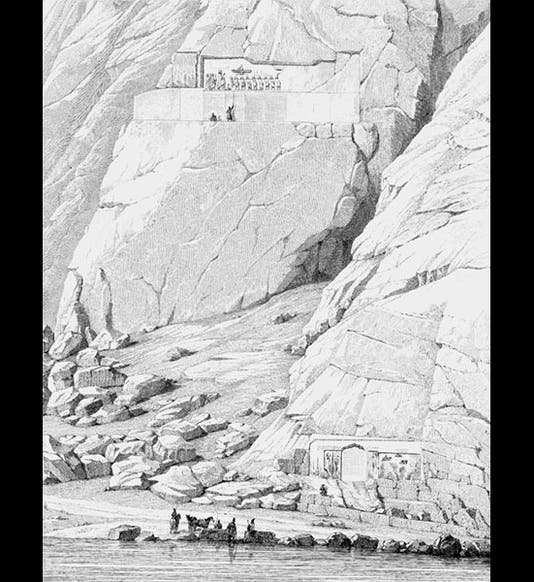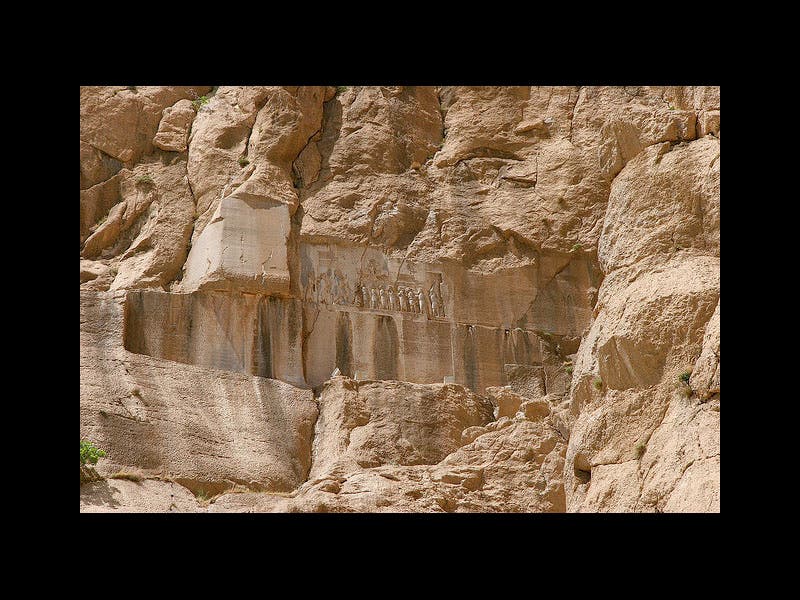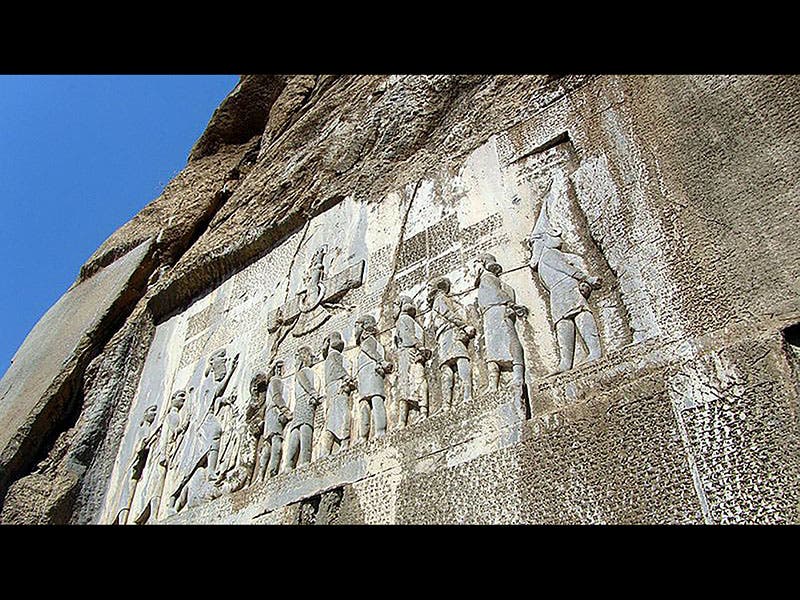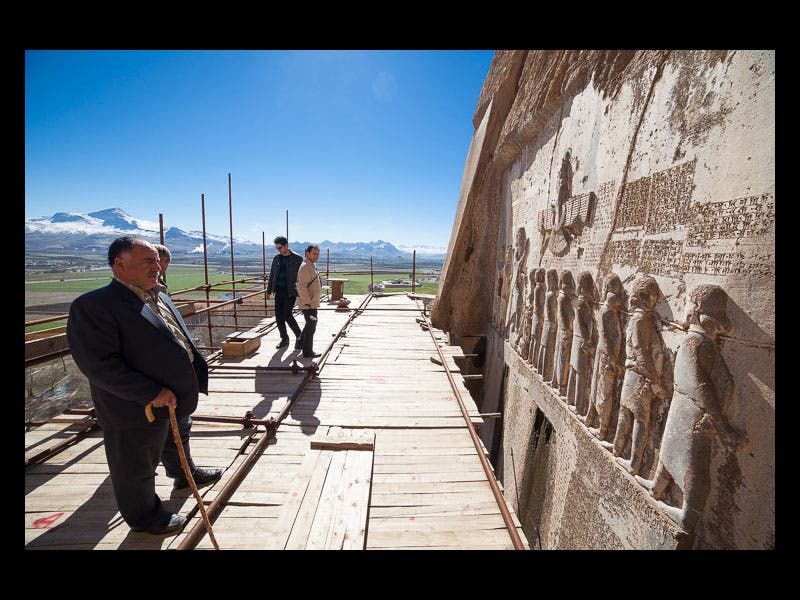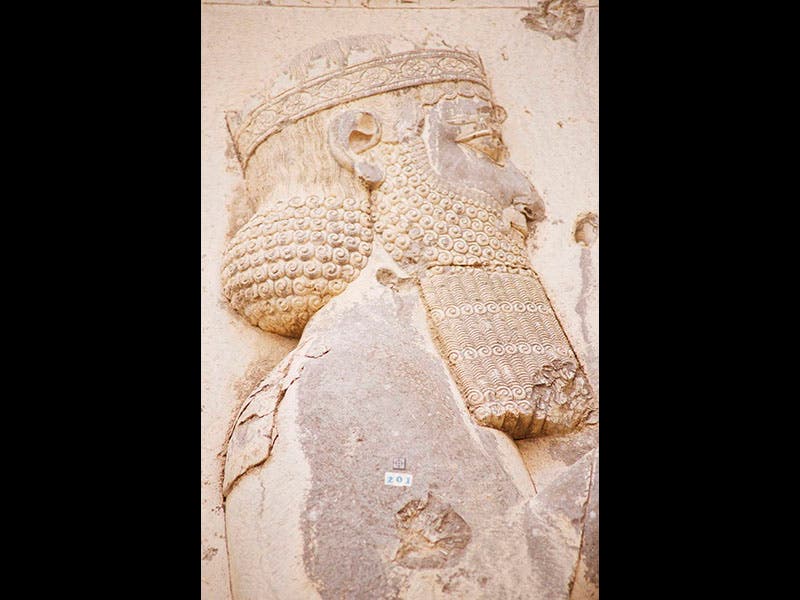Scientist of the Day - Henry Rawlinson
Henry Rawlinson, an officer in the British East India Company, was born Apr. 11, 1810. In the 1840s, Rawlinson played a major role in deciphering the cuneiform writing of the ancient Babylonians (the term "cuneiform" refers to the "wedge-shaped" appearance of the symbols, which were pressed into wet clay tablets before they were dried or fired). Egyptian hieroglyphics had been deciphered in 1822, thanks to the discovery of the Rosetta stone by Napoleon's army in Egypt in 1799. Cuneiform needed a Rosetta stone of its own, and it turned up in the form of the Behistun inscription, a monumental (and nearly inaccessible) cliff carving in what is now western Iran. Above is a drawing of the inscription, 500 feet up the cliff, made from a distance by Pascal Coste in 1839 (first image). In addition to large portraits of Darius the Great and other figures, the site contains a proclamation in three ancient languages--Elamite, Old Persian, and Babylonian--cut into the rock. Above are a semi-distant view of the carvings (second image) and a closer view that allows us to make out Darius (the largest figure), his prisoners, and the inscriptions (third image).
Rawlinson himself climbed to the bottom of the rock carving and transcribed the lower inscriptions, the ones in Old Persian and Elamite (it may be Rawlinson who is standing on the ledge in Coste’s 1839 drawing). The Babylonian inscription at the top was inaccessible, at least to Rawlinson, so he hired a Kurdish youngster to climb up and make papier-māché casts of the cuneiform text. In a modern photo, made with the help of scaffolding, one can see the Babylonian cuneiform at top right (fourth image). With the casts and the transcriptions, Rawlinson and several colleagues were able to decipher first the Old Persian, and ultimately the Babylonian.
Rawlinson announced the Old Persian decipherment in 1846 and the Babylonian in 1851-2, in papers read to the Royal Asiatic Society of Great Britain and Ireland in 1851-52. With Babylonian deciphered, it was now possible to read such treasures as the Enuma Elish, the Babylonian cosmological creation poem that was discovered in 1849 in Nineveh. Hundreds of thousands of cuneiform texts have since been collected--the clay tablets are virtually indestructible--and because very few have been studied, there are surely some more eye-opening scientific texts awaiting the light of translation, thanks to Rawlinson.
The Behistun inscription was declared a World Heritage Site in 2006. The WHS listing uses the modern Iranian spelling of the location, Bisotun. The first photo on the WHS site (and fifth image above) shows a detail of the carved head of Darius. If you look carefully, you will notice that his carefully coifed beard is an insert--carved on a separate block of stone and then placed into a cutout in the rock. Did Darius change his beard style midway through the carving, necessitating some editorial revision? No one knows.
Dr. William B. Ashworth, Jr., Consultant for the History of Science, Linda Hall Library and Associate Professor, Department of History, University of Missouri-Kansas City. Comments or corrections are welcome; please direct to ashworthw@umkc.edu.

